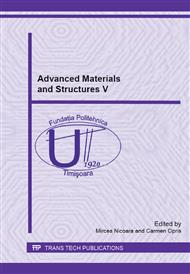p.35
p.39
p.45
p.49
p.55
p.63
p.67
p.73
p.79
Research on the Influence of Pelleting Mixture Components on Chemical Components and Pellets Structure
Abstract:
In this work we followed the chemical composition and structure of pellets produced by two recipes in the laboratory of Energy and Raw Materials Base of the Faculty of Engineering Hunedoara, followed by determining compressive strength of pellets after hardening process and chemical composition. Some of the experiments were performed in a stage carried out at Luleå University of Technology Sweden (SEM and XRD measurements). The experiments have watched also the evolution of hardening temperatures for these pellets, the data was interpreted in the form of charts in Excel.
Info:
Periodical:
Pages:
55-60
Citation:
Online since:
August 2014
Authors:
Keywords:
Price:
Сopyright:
© 2014 Trans Tech Publications Ltd. All Rights Reserved
Share:
Citation:


